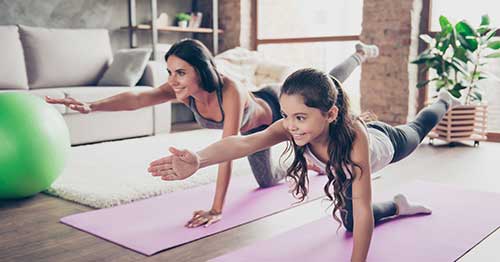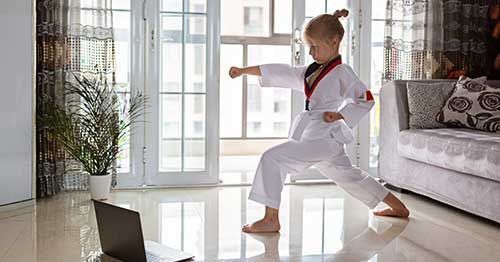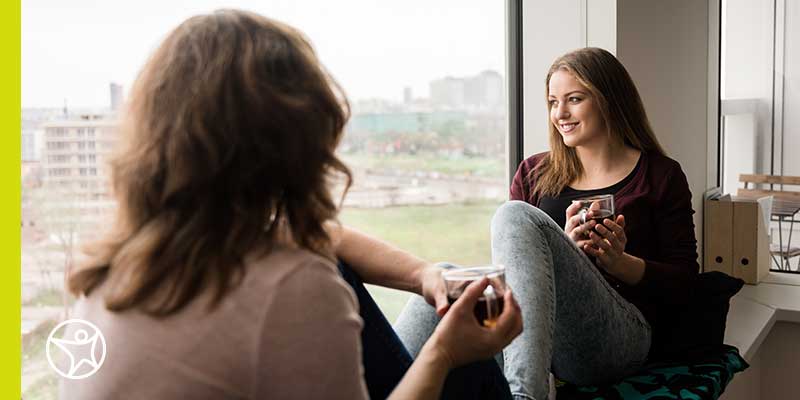Easy 5-Minute Exercises for Kids in Virtual School
by Valerie Kirk
6 min to read
Recess is a favorite part of the school day for students in brick-and-mortar schools. What’s not to love? Students get a break from their lessons and can get up, move around, and play!
Recess is also important for getting homeschool and virtual school students exercising!
While virtual schools like Connections Academy® K–12 online schools offer more flexibility in a student’s day compared to traditional schools, online students still spend several hours a day studying and completing their lessons. Building short recess breaks into the daily school schedule and filling them with easy exercises for kids to do in class will help your homeschooled student stay active and healthy—and expend some energy!
Exercise also promotes effective learning. Exercise boosts brain health for students as it:
- Pumps more blood to the brain
- Increases the brain’s levels of oxygen, glucose, and hormones
- Improves memory and cognition
- Boosts energy levels
- Improves mood
- Reduces stress
The U.S. Department of Health and Human Services (DHHS) and the American Academy of Pediatrics recommend that school-aged children and adolescents get at least 60 minutes of physical activity each day. The DHHS suggests that most of the 60 minutes or more per day be either moderate- or vigorous-intensity aerobic activity—movement that strengthens the heart and lungs—and that students participate in vigorous-intensity physical activity at least three days a week.
Adopting a virtual school physical education program can help you achieve this benchmark. Students can stay active throughout the day by breaking up virtual school lessons with easy exercises for kids to do in class or ones that can be done during scheduled recesses.
Even Easy Exercise Is Good for Students
In Physical Activity Guidelines for Americans, 2nd edition, issued by the DHHS, experts say “any episode of moderate- or vigorous-intensity physical activity, however brief, counts toward the key guidelines for children and adolescents ages 6 through 17 years. For preschool-aged children, activity of any intensity counts, including light intensity.”
As children grow into adolescents, they are able to play organized games and sports and can sustain longer periods of activity. But they still are usually active only intermittently, DHHS says.
The DHHS manual provides several examples of aerobic, muscle-, and bone-strengthening physical activities for children and adolescents. Some activities below, such as bicycling, can be moderate or vigorous intensity, depending upon level of effort.
| Type of Physical Activity | K–6 | 7–12 |
|---|---|---|
| Moderate-intensity aerobics |
|
|
| Vigorous aerobics |
|
|
| Muscle-strengthening |
|
|
| Bone-strengthening |
|
|

7 Easy 5-Minute Exercises for Kids in Online School
Here is a list of easy in-class exercises for kids, some or all of which can be incorporated into their daily routines to get moving for five minutes throughout the day. Or, you can string some together for an exercise-focused recess. These exercises don’t require expensive equipment. We’ve listed them in order of complexity. The first few may be easier for younger children and the latter ones better for older kids, though older kids can benefit from easier exercises too.
1. Stretching
Five minutes of stretching is a good, easy way to get younger students to move around, loosen up and, with regular practice, stay flexible. Older students should also stretch before activities and to cool down after heavy exercise. Here are some simple stretching exercises for kids.
2. Dance party
Two kids’ songs add up to around five minutes, so ask your student to pick two favorites and start jamming! Dancing gets your entire body moving for five minutes of fun. And any kind of sustained movement is dance if there’s music playing! If your student really enjoys dance parties during their in-class exercises, consider getting them involved in dance classes as an online extracurricular activity.
3. Climbing stairs
Climbing the stairs can be a fun five-minute classroom exercise at home—especially when the weather keeps you indoors. Can your student scale the steps ten times in a row? Find out! It might be tougher than they think!
4. Hula-hooping
Hula-hooping is a fun and easy exercise your kids will enjoy. Once they get the hang of it, see how long your student can keep the hoop in motion. For younger kids, place the hoop on the ground and have them hop in and out of the hoop.
5. Calisthenics
Calisthenics are great exercises to get a child’s heart pumping while exercising large muscle groups (good for gross motor coordination). Calisthenics are also a good way to warm up for sustained physical activity. To create a five-minute workout for kids, have your student do five exercises for one minute each. Some effective calisthenics include:
- Jumping jacks (demonstration)
- High knees
- Sit-ups
- Bear crawls
- Butt kicks
- Jogging in place
6. Jumping rope
Jumping rope is an excellent, five-minute workout for all ages. Students can adjust the intensity (speed) according to their abilities. It’s best to jump rope outside, although it can be done safely in a large indoor space with tile flooring.
7. Raking leaves or shoveling snow
These chores are also exercises that work all the large muscle groups. To encourage your student, tell them they can play (or “take a break” if they are older) outside after shoveling or raking a specific area clean or “exercising” for five to ten minutes. Outdoor activity of any kind is a great break from the classroom.

Exercise for Students Throughout the Year
Don’t let a little rain—or snow—stop your virtual school student from reaping the benefits of exercise during classroom breaks. There are plenty of ways to keep moving indoors.
For more physical activity ideas for kids, take a look at these resources:
- Indoor PE Activities for Students in Grades K–5
- Indoor PE Activities for Students in Grades 6–12
- 8 Outdoor PE Games Your Online Student Will Love
- 12 Outdoor PE Activities for Kids
Curious about the online school model and how it can benefit your child? Hear from other parents who made the switch to online school as they bust the top 5 virtual school myths. School in the comfort of your own home might be right for you and your family!



